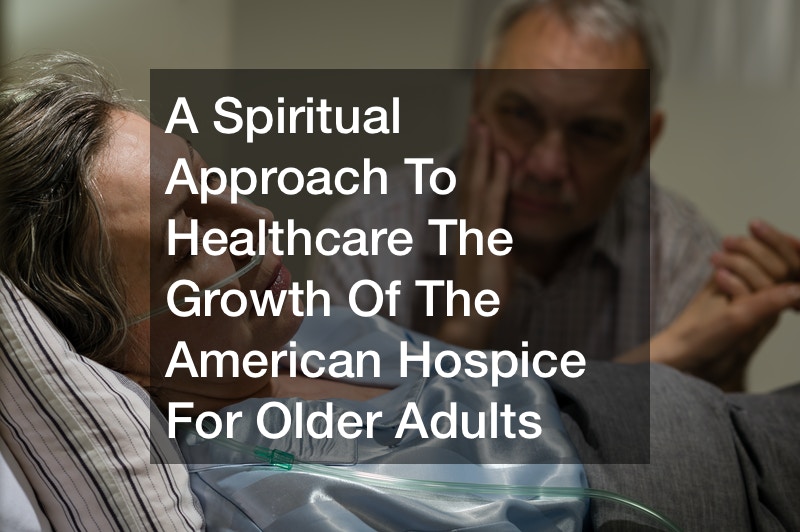
Dealing with an aged or ill family member is never easy. In extreme cases, advanced medical care may be needed and hospice services may be needed as well. With inpatient hospice care and at home hospice services, trained and experienced palliative care experts can help you and your loved one be as comfortable as possible.
Choosing a hospice service is a big step, and it is not something families decide on lightly. There are many questions and concerns involved, and it is important that all involved family members know about palliative care and active hospice services. Calling local hospice providers and facilities can help put your mind at ease and answer any questions you and your loved one may have about the process and what all is involved.
Deciding to go with adult palliative care can help make the time you have with your loved one more relaxed and memorable. It can be a difficult decision to make but is one that can help you and your loved one get the most out of life. So, contact a local hospice provider today to learn more.
Healthcare isn’t just visiting an urgent care clinic when you’re sick or asking your primary doctor for a check-up. It’s also just being given the opportunity to lean on others when you’re entering a new stage of life.
This is the fundamental logic of assisted living facilities and holistic care hospices. Commonly misunderstood as isolated healthcare institutions for older Americans, holistic care hospices are a comfortable and reliable resource for many. They provide 24-hour care to older Americans, elderly Americans and people struggling with disabilities. With the American population seeing a significant shift in its elderly population, holistic care hospices will become more widespread and relied upon. You may just find you’ll need it yourself over the coming decades.
Throughout history to the modern day, holistic hospice care facilities are the difference between comfort and stress for many.
The hospice care facility is far from a new creation. The history of the hospice dates all the way back to the 11th century, with historians determining its earliest creation to a religious order of monks setting up hospitals along a pilgrimage road to Jerusalem. Senators Frank Church and Frank E. Moss would introduce the first hospice legislation to provide steady funding for these healthcare programs in the 1970’s. There are a lot of misconceptions about the function of a hospice and what it stands to offer multiple parts of the population. Some confuse them for lesser hospitals, while others aren’t sure they’re relevant at all.
American healthcare takes on many different forms…and it’s only going to get more complicated in the future. As of April of 2017 there were nearly 60 million people enrolled in Medicare. The number of hospice patients have also seen a spike in applicants. A 2015 survey found the number increasing from 515,000 in 2000 to nearly one and a half million 15 years later. It’s estimated 20% of the American population or more will be over the age of 65 by the time 2030 arrives. Healthcare needs to not just be reactive, but a proactive and accessible model to help people transition from one area of life to the other.
The urgent care facility is used as a middleman between a regular doctor and the emergency room, able to provide immediate care for moderate injuries and illnesses. The assisted living facility is frequently used by elderly Americans and Americans with disabilities. The hospice occupies another section in the healthcare fabric, crossing over with Medicare beneficiaries and elderly populations. A recent industry study found nearly one and a half million Medicare recipients being enrolled in hospice for 24 hours or more in 2015. Additional data from the National Hospice and Palliative Care Organization stated 5% of hospice patients are under the age of 65.
Today hospice is starting to see more attention due to its useful application across multiple areas of the population and easy access. Physical disabilities are becoming more widespread thanks to the growing definition. Mental illness, in particular, is also starting to see more consistent treatment. Medical data has concluded at least 15% of adults over the age of 60 suffer from at least one mental health disorder. Depression is considered the most common (including varieties like seasonal depression and bipolar depression), though chronic anxiety follows close behind. Hospice care services are designed to be flexible at all times.
Holistic care hospices occupy a unique niche of spiritual and functional. Hospice staff members are required to be on call 24 hours a day and seven days a week, tending to a wide variety of patients struggling with physical disabilities, mental illness and the simple onset of age. Hospice care generally starts after a formal referral has been made by a medical professional. A hospice representative will visit the patient within two days or less after the referral is made. Hospice care facilities supplement other forms of healthcare and provide a well-rounded experience to ensure all areas of the body, from physical to emotional, are tended to.
Healthcare should be as multifaceted as your life. Hospice care is just one way of achieving that.


